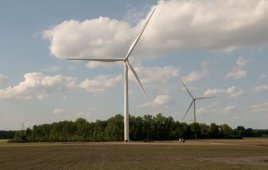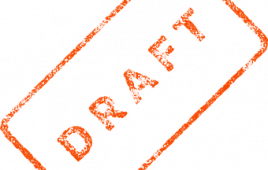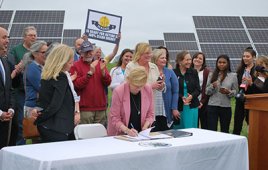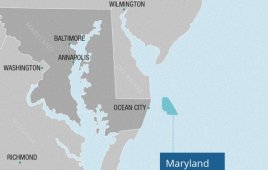McSwain Manufacturing, a division of Heraux Devtek in Cincinnati, Ohio, has been manufacturing power-generation parts for almost 30 years. In fact, it manufactured for GE Energy Power Systems even before the company purchased Enron’s wind division and entered the renewable energy industry. “Because they knew us as a trustworthy vendor, they approached us with a proposal to make large gearbox shafts,” says McSwain’s Sales Manager Becky McClanahan. “That got our foot in the door of the wind industry. Things grew from there because if you are qualified by one OEM, others take that into consideration when looking for suppliers.” The company manufacturing includes large parts such as gearbox main shafts and their housings, among other items.
 One recent change that McClanahan has seen is that requirements have gotten more stringent since 2003. “The things we manufacture are so huge they require a large CMM for inspection,” she says. “Our company was willing to make that investment to grow with the industry. Qualifying your company to an OEM can take up to a year. “OEMs want a turnkey product, so although our specialty happens to be manufacturing, we are also responsible for purchasing raw materials. We had to grow into that area because we were not familiar with it. Developing a material vendor can take six months because the material must have specific mechanical and chemical properties.”
One recent change that McClanahan has seen is that requirements have gotten more stringent since 2003. “The things we manufacture are so huge they require a large CMM for inspection,” she says. “Our company was willing to make that investment to grow with the industry. Qualifying your company to an OEM can take up to a year. “OEMs want a turnkey product, so although our specialty happens to be manufacturing, we are also responsible for purchasing raw materials. We had to grow into that area because we were not familiar with it. Developing a material vendor can take six months because the material must have specific mechanical and chemical properties.”
Developing such a vendor first ensures they have the capability to produce the material properties that match the buyer’s requirements. For instance, if you need a casting for a brake pad, you could go to 50 different vendors competing over price. But for wind, it’s not so easy because of the component size and particular material properties. For example, the shafts we produce measure about 80-in. dia., 120 in long, and weigh some 15,000 lb.”
McClanahan says even after that, you have to understand quality and external requirements, warrantees, and tasks such as painting at an internal facility. She says you may have to warranty the component for 20 years, which calls for an uncommon level of dedication. So from start to finish, it might take a year to develop a vendor.
Still, don’t be put off by the rigors of getting qualified. There are organizations ready to assist. For instance, McClanahan says the Great Lakes Wind Network (glwn.org) assisted in their growth by providing education on the industry. GLWN also conducted facility and capability assessments of the company by examining their facility and the the components currently in production. Then it evaluated the quality system, verified that the machinery was good condition, and concluded they were a viable vendor.
GLWN also suggested improvements to attract OEMs. “We participated in several assessments,” says McClanahan. “GLWN introduced us to companies they thought we might be a good fit for us, and vice versa. This helped us develop relationships with other OEMs, many of which have been successful. When an OEM begins manufacturing in the U.S., it’s hard for them to know who is a qualified vendor. They don’t know where to start but GLWN is a good place.”
For those still looking to link into the wind industry’s supply chain, McClanahan suggest three guidelines:
1. Present a list of things or services your company can provide to the OEM, such as components in a wind turbine you can manufacture. It is not up to the OEM to discover your company’s skills. They need a little guidance.
2. Be patient. OEMs are inundated with suppliers that want to break into the industry. As long as your company is qualified and you have a good service to provide, they will get back to you. But after every wind industry trade show or convention, they are inundated with RFPs and evaluations.
3. Be committed. Some components will take a year to produce, so there has to be a company commitment to get into the manufacturing of them. McClanahan says her company has dedicated a complete section of their factory to the wind industry.
WPE
Filed Under: Uncategorized




